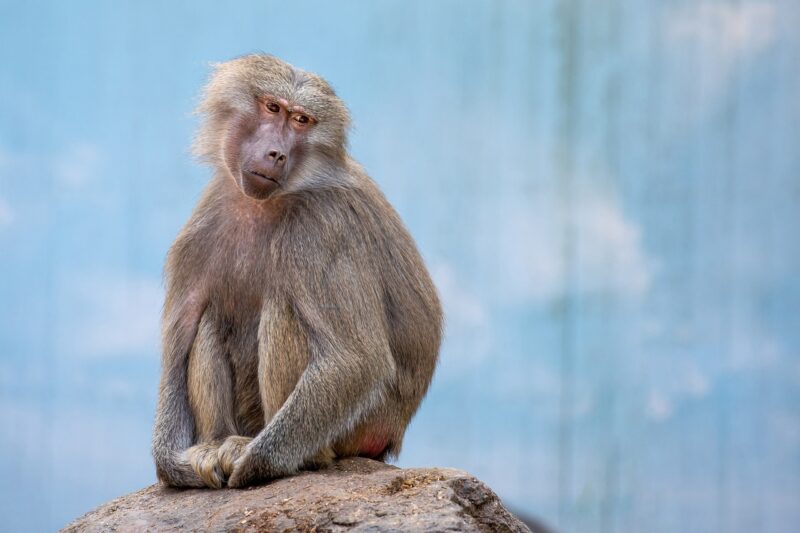The Unique Abilities of Monkeys: How Primates Use Tools and Solve Problems
November 14, 2024

Monkeys have fascinated scientists and the public alike with their remarkable intelligence, agility, and social structures. Among the many species of primates, monkeys stand out not only for their diverse behaviors but also for their unique ability to use tools and solve complex problems. This article explores the intriguing world of monkey intelligence, examining how these primates have adapted their tool-using skills throughout evolution and what this reveals about their cognitive abilities.
1. Understanding Tool Use Among Monkeys
The use of tools is often considered a hallmark of higher intelligence. In the animal kingdom, several species demonstrate this behavior, but primates take it to another level. Tool use among monkeys is diverse and sophisticated, showcasing their problem-solving capabilities.
Tool use has been documented in both Old World monkeys (like macaques and baboons) and New World monkeys (like capuchins and squirrel monkeys). Common tools include sticks, stones, and leaves, which they utilize for various purposes, such as foraging, grooming, and defense.
2. Notable Examples of Monkey Tool Use
2.1. Capuchin Monkeys: The Tool Masters
Capuchin monkeys are widely recognized as one of the most proficient tool-users in the primate world. Observations have shown them using rocks to crack open nuts and other hard-shelled fruits. Researchers have found that the capuchins not only select suitable stones but also adjust their tool-using techniques according to the context. For example, they vary the force applied when striking the nut based on its toughness.
2.2. Macaques and Their Innovative Strategies
Macaques exhibit impressive creativity when it comes to tool usage. At the famous Kanazawa Zoo in Japan, researchers documented long-tailed macaques using stones or other hard materials to access food. They have even been seen using their environment to enhance their tool use, such as dropping stones into water to create ripples that caught fish. This adaptability indicates their ability to think ahead and employ strategies that optimize their foraging.
3. The Insights from Problem Solving in Monkeys
Tool use is just one aspect of mushrooming intelligence among monkeys. Problem-solving abilities provide additional evidence of their cognitive skills. Through various experiments, researchers have delved into how monkeys approach and resolve challenges, revealing fascinating insights.
One notable study involved a series of puzzles requiring monkeys to obtain hidden food. Monkeys displayed planning and foresight; for instance, they would exhibit patience and strategize how to overcome obstacles, such as moving boxes or using sticks to reach an inaccessible treat. This behavior demonstrates complex cognitive processing and suggests an underlying level of planning.
4. Social Learning and Its Role in Intelligence
Monkeys thrive within intricate social structures, and this sociality plays a substantial role in their learning processes. Observational learning, where an individual learns by watching others, helps them acquire tool use and problem-solving strategies. Monkeys often learn complex tasks more efficiently when they can observe their peers successfully solving problems.
For example, young monkeys may watch older, more experienced troop members using tools. They often replicate these behaviors, a method that allows them to learn practical skills without trial and error. This multi-generational transmission of knowledge enhances their overall survival and adaptability within diverse environments.
5. The Role of Environment in Tool Use and Problem Solving
The environment plays a fundamental role in driving the evolution of tool use and problem-solving skills among monkeys. Different habitats present distinct challenges that require unique strategies for survival. For instance, monkeys living in resource-rich areas may display less dependency on tool use compared to those in more challenging environments where food sources are scarce.
Capuchin monkeys in forested areas exhibit advanced tool use because their environment necessitates innovative foraging techniques. By using sticks to extract insects from tree bark or stones to open nuts, these monkeys adapt to their habitats to improve their chances of securing food.
In contrast, monkeys in urban surroundings exhibit different problem-solving strategies, such as scavenging or utilizing human-made objects for tools. This flexibility in behavior highlights their remarkable adaptability to changing environments, further reinforcing their intelligence.
6. Conclusion: Implications of Monkey Intelligence
The unique abilities of monkeys, especially their skills in tool use and problem-solving, offer invaluable insights into the evolution of intelligence. By studying monkeys, we can better understand the complexities of cognitive development in primates and how these strategies may relate to human evolution.
Monkey intelligence showcases a spectrum of behaviors that challenge preconceived notions of animal intelligence. It illustrates their capacity for creativity, adaptability, and social cooperation—traits that not only enhance their survival but also inspire a deeper appreciation for the rich tapestry of life on Earth.
In our quest to enhance conservation efforts, acknowledging the intelligence of monkeys and their essential behaviors can be pivotal. Emphasizing their cognitive abilities allows us to advocate for their protection and highlight their role in vibrant ecosystems worldwide.
As we uncover more about the unique abilities of monkeys, it becomes increasingly evident that they are not merely animals but rather beings with profound intelligence, deserving of our respect and protection.








